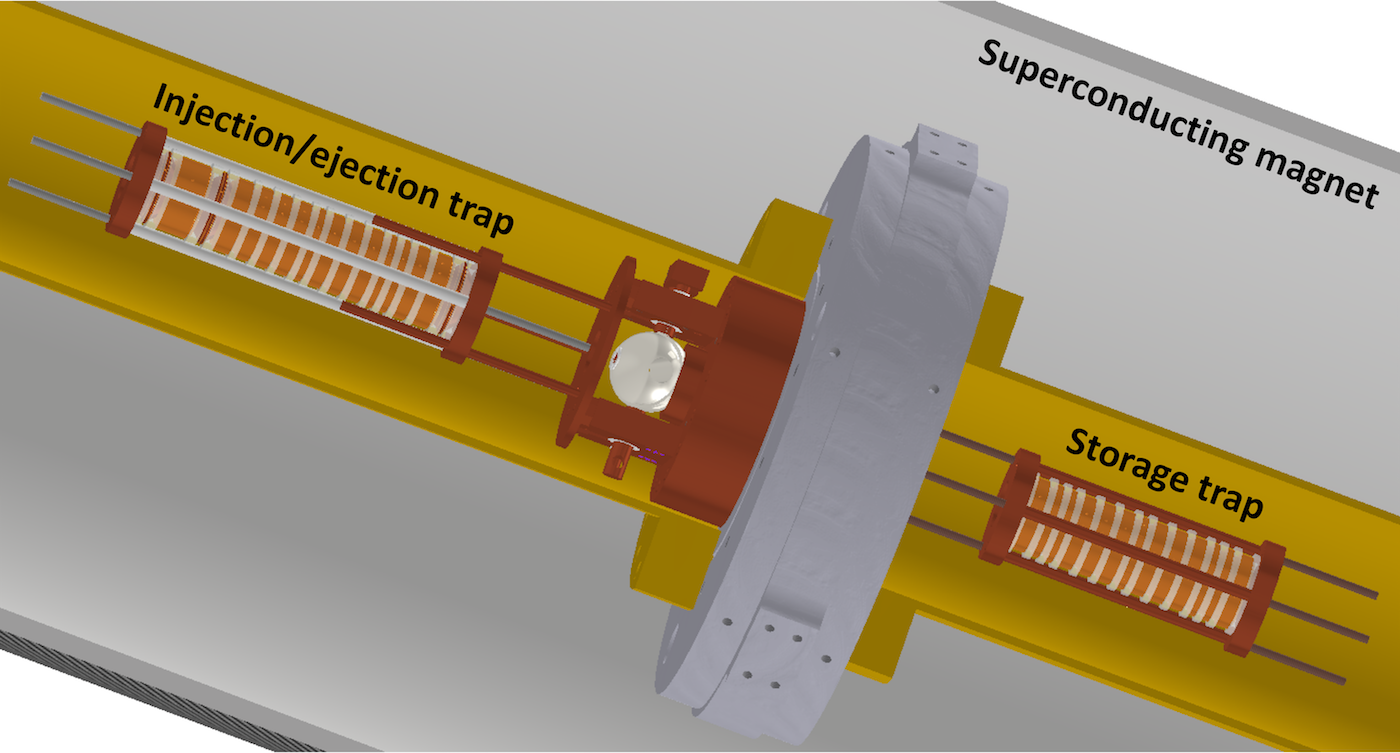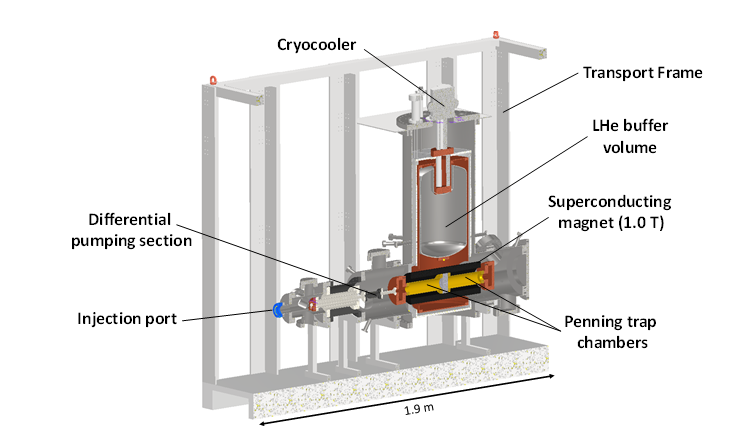Antimatter is a tricky substance to store and transport, mostly because of its habit of annihilating any container you try to put it in. Now, researchers at the BASE collaboration at CERN have outlined a new antimatter trap designed to safely carry the volatile stuff to new facilities, which could help scientists unlock some of the most fundamental mysteries of the universe.
Ordinary matter makes up everything from plants to planets, animals to entire galaxies, and us humans ourselves. Antimatter is kind of like the evil twin of regular matter – each antimatter particle carries the opposite charge to its matter counterpart, meaning if ever the two should meet they annihilate each other in a burst of energy. Naturally, that makes antimatter difficult to work with. How do you store or transport a substance that will destroy anything it’s placed in?
CERN’s Antimatter Decelerator (AD) is one of the few places on Earth that readily produces the stuff, but it’s not the ideal location to study it due to strong magnetic interference. And that’s where the transportation problem rears its head.

Christian Smorra
The BASE collaboration has now designed a new device, called BASE-STEP, that could help scientists move antimatter around to other facilities. The key to the system is what’s known as a Penning trap, which uses electric and magnetic fields to suspend antiprotons (the antimatter version of protons) away from the walls of the container. But there are atoms in air too of course, so the trap also stores them in a vacuum. BASE-STEP would be made with two Penning traps – one to receive and release antiprotons and a second one that acts as a storage reservoir.
Penning traps are already in use in antimatter facilities, with CERN previously showing they can store antiprotons for over 400 days – a huge improvement over the record of 16 minutes, set in 2011. But the real challenge for the team was to then make these devices portable.
To do so, BASE-STEP’s traps will be stored in the center of a 1-Tesla superconducting magnet, which will prevent disturbances from bumps and jolts during transport. There’s also a buffer of liquid helium, to keep the system cool for hours at a time without needing any electrical power. The whole unit would measure 1.9 x 1.6 x 0.8 m (6.2 x 5.2 x 2.6 ft) and weigh less than 1,000 kg (2,200 lb).
“These compact dimensions and weight mean that we could in principle load the trap into a small truck or van and transport it from the AD hall to another facility located at CERN or elsewhere, to further our understanding of antimatter,” says Christian Smorra, BASE deputy spokesperson.

Christian Smorra
Studying antimatter could help answer some of the biggest questions of physics, including why the universe as we know it wasn’t destroyed billions of years ago. According to the Big Bang theory, matter and antimatter should have been created in equal amounts, and yet today there’s clearly an imbalance in favor of matter. So what could have caused that imbalance, to which we owe our very existence?
Having opposite electric charges isn’t enough to account for the discrepancy, so scientists are investigating other potential differences between matter and antimatter. And to do that, more scientists in more facilities need access to the enigmatic antimatter. Hopefully BASE-STEP can help with that.
Development on the first components of the device has begun, and the BASE team says it should be ready in 2022.
Source: CERN, Experimental Physics newsletter
Source of Article